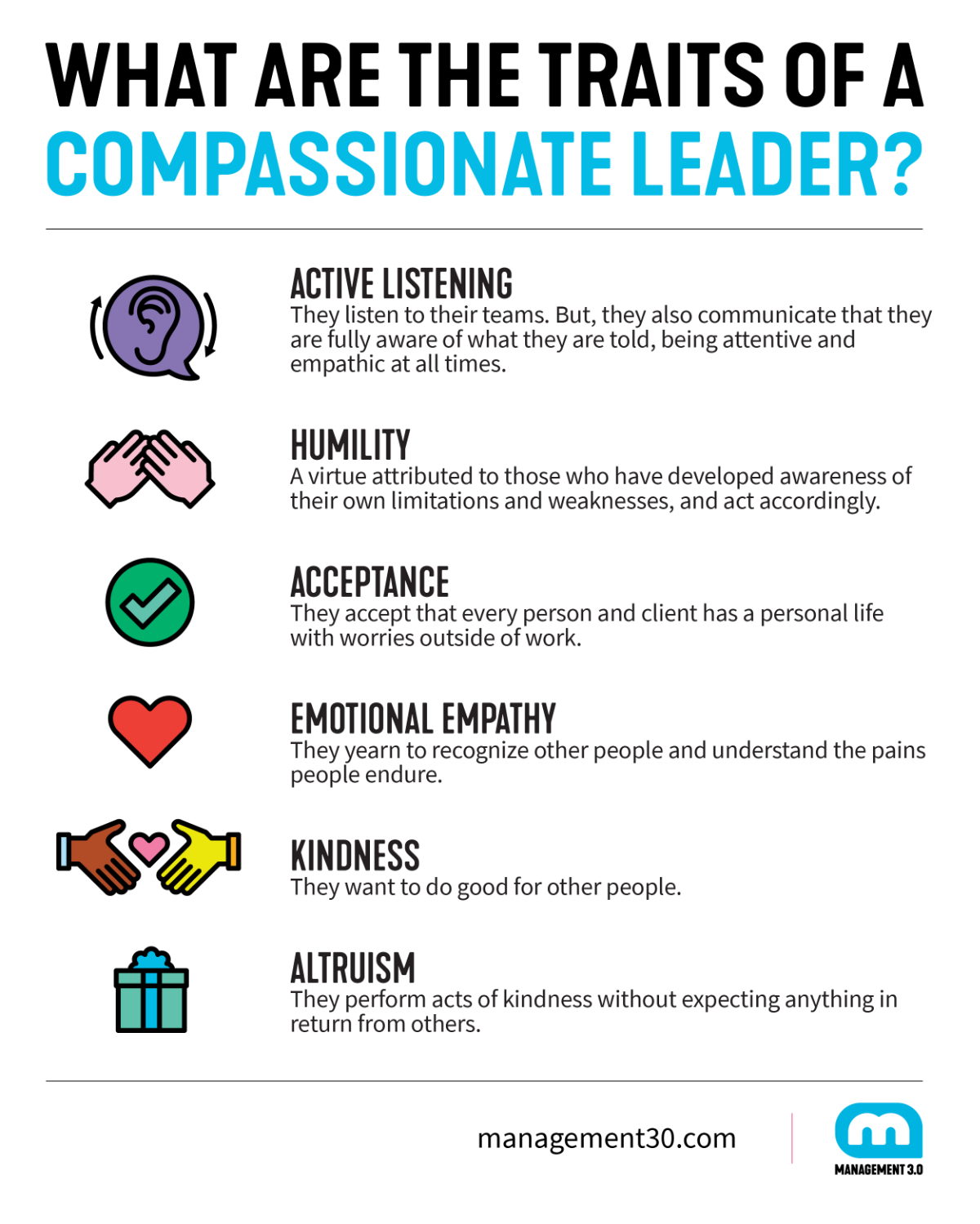But what does it mean to be empathic and compassionate as a leader?
And what differentiates compassion from empathy?
Primi Cachero, a Management 3.0 Facilitator from Spain, explains what it means to be a Compassionate Leader and how you can practice more compassion in your daily business.
- Empathy vs. Compassion
- Why is Compassionate Leadership important?
- Examples of Compassionate Leaders
- What are the traits of a Compassionate Leader?
- Tools for Compassionate Leaders
Empathy vs. Compassion
Empathy is the ability to understand another person’s emotional life, almost in all its complexity, both cognitively and emotionally. Empathy creates a feeling of understanding the other party. It is instinctive, rooted in our brains, and it is what in psychology they call cognitive empathy. Most people mean this when referring to being empathic.
However this is only one part of empathy, the other is emotional empathy. The Professor of Psychology at Yale University, Paul Bloom, says, “Recent research in neuroscience and psychology (to say nothing of what we can see in our daily lives) shows that empathy makes us biased, tribal, and often cruel.”
It is the longing not only to understand the other person but also to feel their pain; this is the empathy to develop. It is vital to improve this in the work environment, help unleash the potential of workers, and help them to become more resilient.
On the other hand, compassion would be when you see another person in trouble and want to help them selflessly. A clear example is when a person in the street drops their shopping basket, and you help them pick everything up, even if it means you miss the bus that takes you to work.
This is because compassion refers to the empathetic understanding of a person’s feelings (emotional empathy), accompanied by kindness (natural inclination or tendency to do good) and altruism (seeking the good of others selflessly) to calm the pain of that person. Compassion creates a feeling of selflessly helping the other part.
Wisdom without compassion is cruelty, and compassion without wisdom is madness.
Fred Kofman
Why is Compassionate Leadership important?
Through the development of emotional empathy, compassion must create an emotional distance between the individual and the situation. This emotional distance allows you not to fall into biases, such as treating your teams better than the rest due to proximity and being aware of treating everyone equally.
We can be more resilient with compassion, helping ourselves and others recover from problems with learning and improve our overall well-being (The EU will allocate €5.1 billion over the next seven years to help build resilience in health).

Compassion at this point creates honesty and transparency, generating a more psychologically safe work environment and strengthening personal and professional ties.
It also allows you to focus on the outside, the customer and their pain, and how to help them with the product or service to mitigate or overcome that pain by covering their needs.
Compassion can allow us to increase motivation and engagement with our employees and customers, facilitating new, more productive work environments.
People feel more secure and protected, valued by being able to act for themselves, receiving and giving help to others.
Compassion generates a higher retention rate in employees through their leaders. People feel more involved, secure, and willing to collaborate as equals. Compassion breaks the hierarchical or pyramidal barriers of the organization.
Examples of Compassionate Leaders
Nelson Mandela and Mahatma Gandhi are two of the best-known Compassionate Leaders throughout human history.
During Covid-19, Compassionate Leadership has been seen in all areas: food distribution in places where people could not leave their homes, applications and home delivery systems by neighbors who acted as Compassionate Leaders to advanced people age, etc.
In organizations, where even governments have restored the return to offices, companies have maintained teleworking five days a week to facilitate family reconciliation for their employees.
It’s hard to practice compassion when we’re struggling with our authenticity or when our own worthiness is off-balance.
Brene Brown
The best-known case, at the cinematographic level, has lately been that of Dr. Eric Manheimer, the series The New Amsterdam, based on the biography of the doctor, director of the Kings County Hospital in Brooklyn, and whose phrase has become very famous “How can I help you?” That is the essence of a Compassionate Leader.
What are the traits of a Compassionate Leader?
What makes a leader a Compassionate Leader? Let’s look into some of their characteristics:
- Active listening
Compassionate Leaders listens to their teams. But, they also communicate that they are fully aware of what they are told, being attentive and empathic at all times.
- Humility
It is a human virtue attributed to those who have developed awareness of their own limitations and weaknesses, and act accordingly.
- Acceptance
Compassionate Leaders accept that every person and client has a personal life with worries outside of work.
- Emotional empathy
Compassionate Leaders yearn to understand the other person and feel their pain as their own.
- Kindness
Compassionate Leaders want to do good for other people.
- Altruism
Compassionate Leaders perform acts of kindness without expecting anything in return from others.

Tools for Compassionate Leaders
Personal Maps & Niko-Niko Calendar: Active listening is the first step toward compassion. These tools allow you to get to know people better.
Value Stories combined with Improv Cards for Storytelling: Identifying real stories and seeing how our peers express themselves and what values exist in them helps us create traction to develop Compassionate Leadership in them and yourself.
They serve us to show acts of compassion and take the pulse of our teams as part of the listening necessary to be compassionate.
Actions like:
- Bring a smile to stressed people (It’s one of the 12 Steps of Happiness!)
- Help prevent team burnout with breaks throughout the day.
- Give Kudo Cards to deserving team members after a tremendously stressful or creative job that has challenged them or left their comfort zone.
- Lean Coffee or Corporate Huddles.
- Investigate problems through the Problem Time practice.
In many cases, in our work, we continually face fear. Fear of the unknown, with a new product, service, or project. These are the moments to emerge as a Compassionate Leader, helping to mitigate or overcome fear as facilitators with these techniques.
The tools allow us to investigate problems and develop skills that make us compassionate, evolving as humans and professionals with new leadership: Compassionate Leadership.
Photo by Giulia Bertelli on Unsplash

